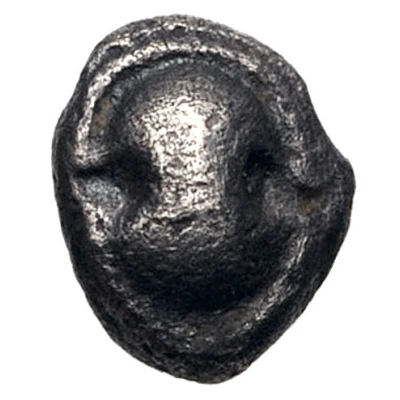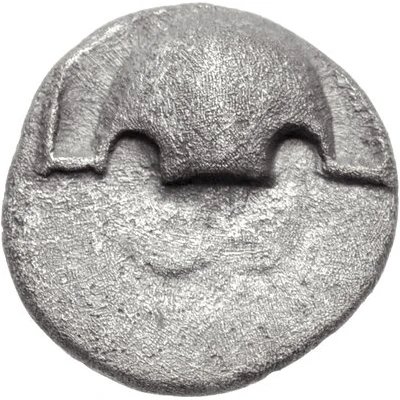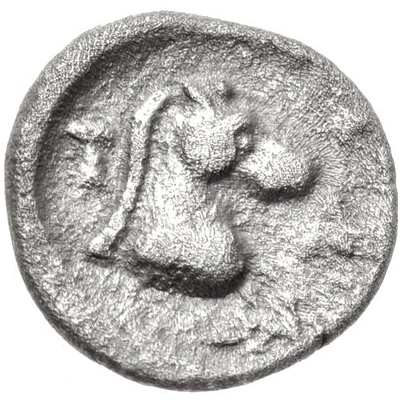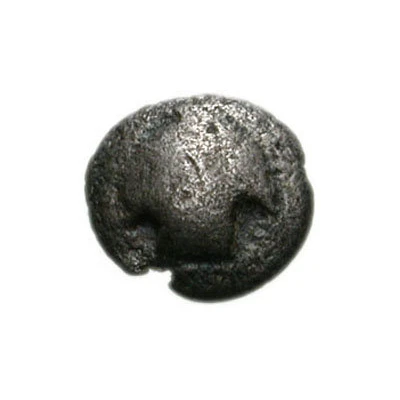
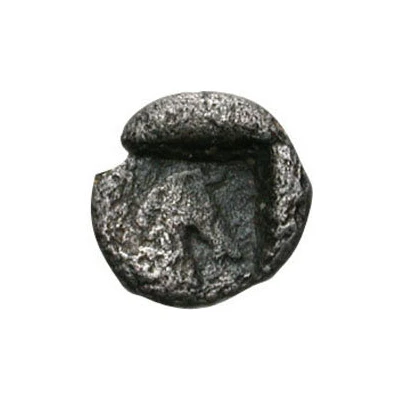

© Classical Numismatic Group, Inc.
Hemiobol 457 BC - 448 BC
| Silver | 0.28 g | 8.0 mm |
| Issuer | Tanagra (Boeotia) |
|---|---|
| Type | Standard circulation coin |
| Years | 457 BC - 448 BC |
| Value | Hemiobol (1⁄12) |
| Currency | Drachm |
| Composition | Silver |
| Weight | 0.28 g |
| Diameter | 8.0 mm |
| Shape | Round (irregular) |
| Technique | Hammered, Incuse |
| Demonetized | Yes |
| Updated | 2024-10-10 |
| Numista | N#146681 |
|---|---|
| Rarity index | 100% |
Reverse
Horse's head right within incuse square, no ethnic
Comment
Head, Boeotia p. 28; Traité III 338, pl. CCIV, 3.
Interesting fact
The Hemiobol coin from Tanagra (Boeotia) was used as a form of currency in ancient Greece during the 5th century BC. Its name "Hemiobol" comes from the Greek words "hēmi-" meaning "half" and "bolos" meaning "throw", which refers to the coin's value being equal to half the value of a full "bolos" coin. Despite its small value, the Hemiobol was widely used in trade and commerce, and many have been found in archaeological excavations throughout the region.
